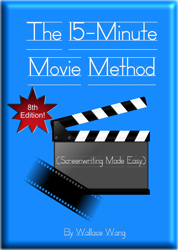Why did “Furiosa: A Mad Max Saga” flop at the box office? Part of the reason is that it’s not a very good movie. The special effects, stunts, and action is visually interesting, but part of the problem lies in the fact that the movie spends half the time focusing on Furiosa as a little girl. Then the second half of the story focuses on Furiosa as a young woman.
Suddenly we have two different characters to care about. We were introduced to a young Furiosa and suddenly we lose her halfway through the movie to meet an older Furiosa. This forces us to learn who this older Furiosa is like as a character. In general, when you tell a story that involves massive time spans, you weaken tension and suspense.
Study all great movies and you’ll find almost none of them show the hero as two different characters and ages in two different settings. In “The Hunger Games”, we follow Katniss as she volunteers for the games, gets whisked off to the Capitol, appears on TV for the adoring crowds, and then survives the Hunger Games. All of this takes place by focusing on Katniss within a condensed period of time from the time she volunteers to the time she returns home, which is about a week.
In “Die Hard,” the time and place get condensed even further. John McClane spends one night trapped in a skyscraper. By condensing time and place, “Die Hard” ratchets up the tension because time is running out. Either John McClane saves his wife and all the hostages before the villain blows them up by the end of the night, or he fails and everyone dies. Either John McClane finds a way to defeat the villain within the limited confines of a skyscraper or he doesn’t.
Compare this to “Furiosa: A Mad Max Saga” where the time span of the story occurs over years (a decade?) and the setting of the story goes all over the place form Furiosa’s home to the villain’s lair to all the land in between.
By expanding the time frame of the story, there’s no sense that the hero needs to act now to defeat the villain. Instead, the hero has years to wait. By expanding the setting, the hero isn’t forced to deal with the villain. In fact, for much of the story, the villain is largely absent from the story. This lack of immediacy drains the story of any tension or suspense.
Is it any wonder that “Furiosa: A Mad Max Saga” flopped at the box office?
The lesson is clear. The more limited the time span of your story, the more it forces your hero into taking action now before it’s too late. The more limited the setting of your story, the more it forces the hero to face the villain and not run away or avoid the villain altogether.
What would make a more intense story? A man forced to fight a villain in an elevator in the next five minutes, or a man forced to fight a villain in South America over the next two decades?
Condense the time and place of your story as much as possible. Stories where we watch the hero as a little kid for an hour and then watch the hero as a middle-aged man for the remaining hour probably isn’t going to work. Just ask the people who made “Furiosa: A Mad Max Saga”.
Sign up to take a FREE course about how to write scenes in a screenplay.

